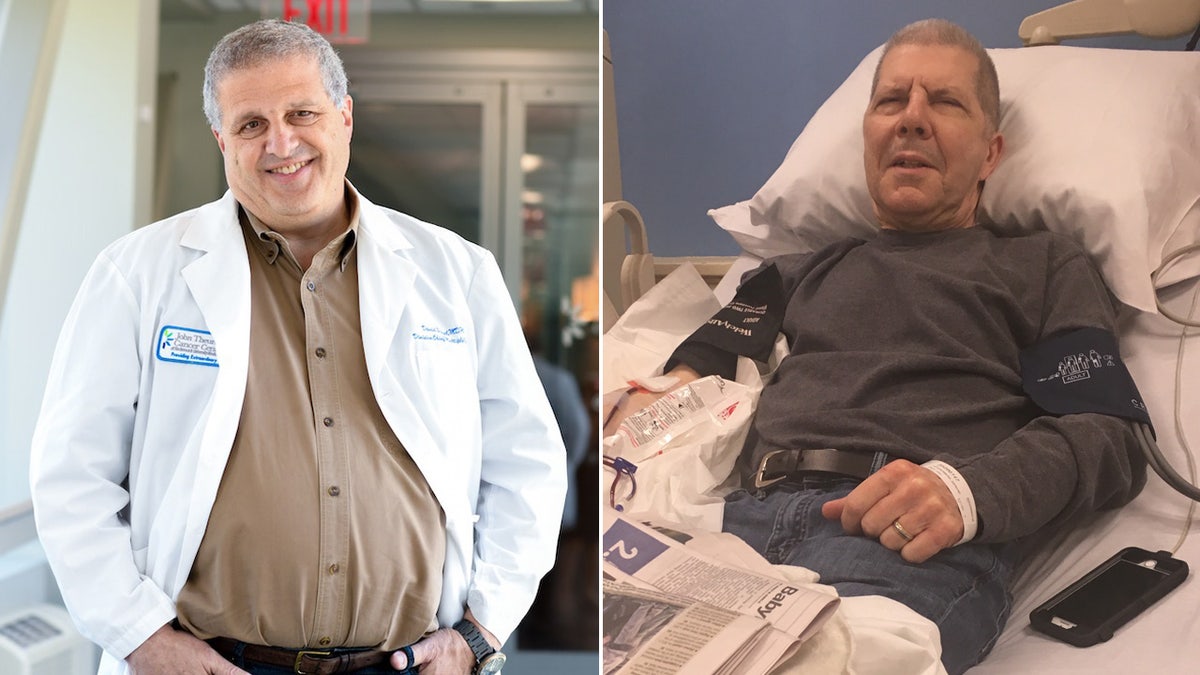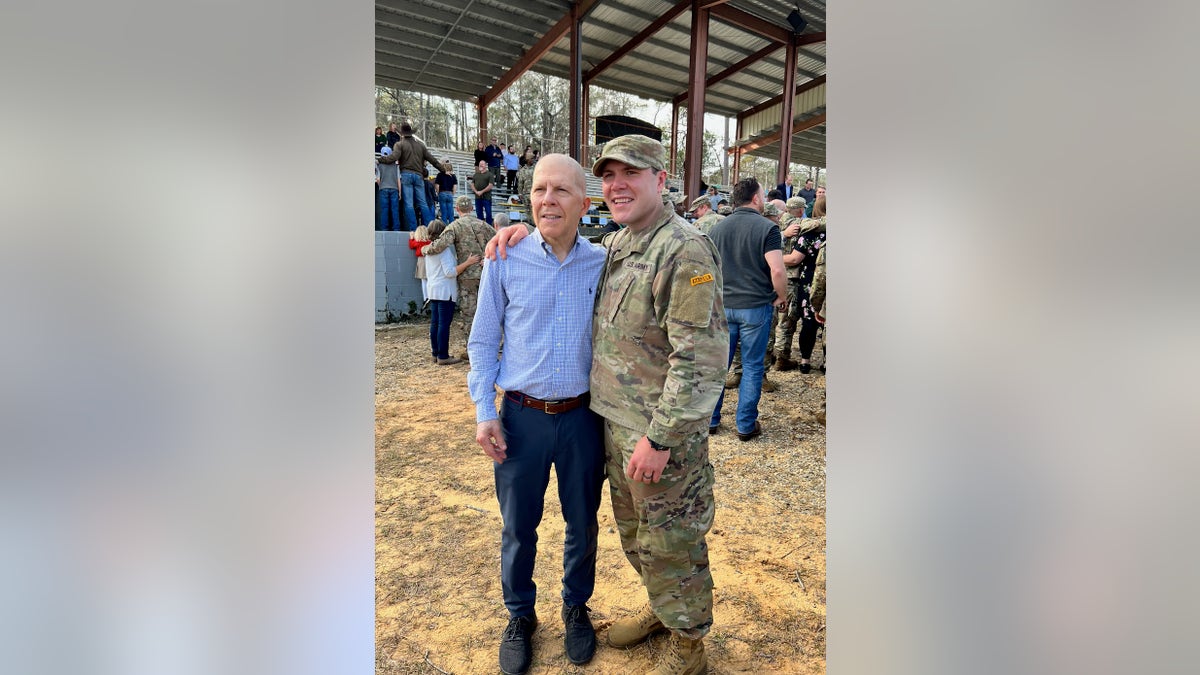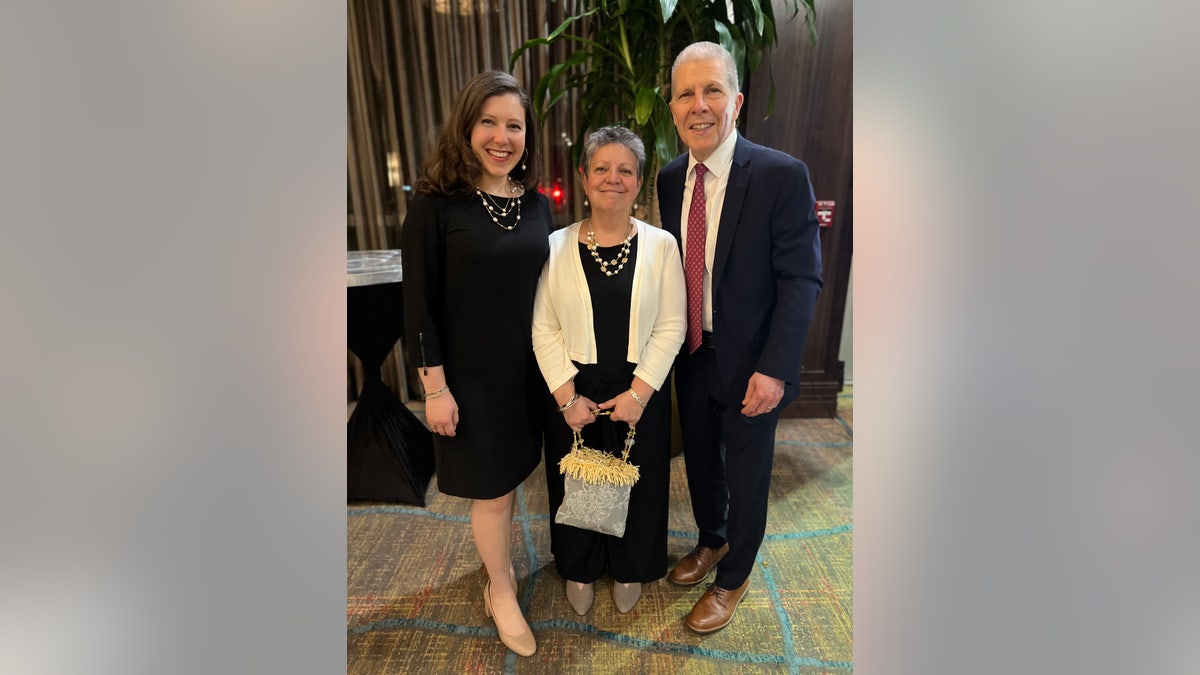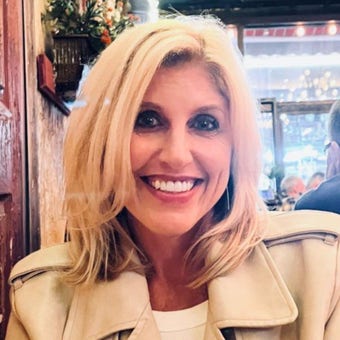WATCH LIVE: Americans mark 9/11 at the World Trade Center memorial in Lower Manhattan
Vice President Harris is present at the event.
Nearly 3,000 people died in the terrorist attacks on Sept. 11, 2001 — and 22 years later, that number continues to rise due to related cancer deaths.
As of 2022, approximately 4,343 survivors and first responders died from toxic exposure, far exceeding the number that lost their lives on the day of the attacks, according to the World Trade Center Health Program.
But many patients and doctors continue to fight these cancers daily, including at Hackensack Meridian’s John Theurer Cancer Center in New Jersey.
One of these is Gerard Vanderberg, who was diagnosed with multiple myeloma, a cancer of the blood plasma cells, in August 2010.
He's been treated at Hackensack Meridian since his diagnosis.

Gerard Vanderberg (right) was diagnosed with multiple myeloma, a cancer of the blood plasma cells, in August 2010. He has been treated at Hackensack Meridian by Dr. David Siegel (left) since his diagnosis. (Dr. David Siegel/Gerard Vanderberg)
Vanderberg was a healthy 47-year-old working as a bond trader in a building directly across the street from the Twin Towers at the time of the 9/11 attacks.
He recalls the large amount of "white dust" that covered every surface when he returned to the office to gather his belongings a few days after 9/11.
"The white stuff was all over the place — in my computer, on my desk, in my books," Vanderberg told Fox News Digital in an interview.
"It wasn’t until later that I realized it was asbestos."
Vanderberg considered himself lucky to be alive after the attack. It would be nine years before he started noticing some unusual symptoms.
"I was in great shape at the time — very athletic, never got sick — but suddenly there were some things going on in my body," he said.

Gerard Vanderberg is pictured in recovery after his first stem cell transplant at Hackensack Meridian in New Jersey. (Gerard Vanderberg)
He started getting pain in his side and his knees in 2009, which at first he chalked up to soreness from playing basketball. Next, he developed a plasmacytoma, a tumor of plasma cells, outside his right lung.
The following August, Vanderberg’s doctor ordered some blood work, which led to the diagnosis of multiple myeloma, a cancer of the plasma cells.
"Right away, I decided, ‘I'm gonna fight this as much as I can,’" he said.
"There has been a significant increase in the risk of myeloma among people who worked in the World Trade Center, as well as first responders and construction workers."
Led by his oncologist, Dr. David Siegel, Vanderberg underwent an aggressive treatment journey that included many rounds of chemotherapy, radiation and stem cell treatments.
Multiple myeloma is the cancer that saw the largest uptick due to exposure at Ground Zero, according to Siegel.
"There has been a significant increase in the risk of myeloma among people who worked in the World Trade Center, as well as first responders and construction workers who returned to the area after the attack," Siegel told Fox News Digital in an interview.

Dr. David Siegel of Hackensack Meridian in New Jersey is pictured here. There's been a significant increase in the risk of myeloma among people who worked in the World Trade Center, he noted. (Hackensack Meridian John Theurer Cancer Center )
The collapse of the World Trade Center sent many toxic carcinogens into the air, including asbestos, silica, heavy metals and combustion products, according to a study published in the Journal of the National Cancer Institute.
"I suspect that the people at the World Trade Center inhaled materials that got into their lungs," Siegel said.
TOXIC CHEMICAL POISONING: HAVE YOU BEEN AFFECTED? HOW TO KNOW
"It didn't necessarily cause an injury in the lungs that turned into a cancer, although that could happen as well — but these materials got encapsulated in the immune cells, and the immune system just couldn't rid itself of this chronic exposure."
Chronic stimulation of the immune system increases the risk of getting blood cancers, Siegel noted, particularly multiple myeloma and lymphomas.

Gerard Vanderberg (left) is pictured with his son Joseph after his graduation from Army Ranger School in December 2022. (Gerard Vanderberg)
Because melanomas take a long time to develop, it can be years or even decades before a survivor receives a diagnosis, the doctor said.
In the years after 9/11, Siegel began to notice a cluster of cancer cases in the area, particularly among patients who were younger than the typical age of myeloma diagnosis.
"With myeloma, the median age of diagnosis is about 70 … The median age for the World Trade Center-exposed patients was significantly younger than that."
"With myeloma, the median age of diagnosis is about 70, and the median age for the World Trade Center-exposed patients was significantly younger than that," he told Fox News Digital.
"While I can’t say that the World Trade Center was responsible for every myeloma diagnosis that occurred in each exposed person, I can say that people who are exposed to the World Trade Center are statistically more likely to get myeloma," Siegel added.

Vanderberg said he is "feeling good." He enjoys skiing, golf and yoga. (Gerard Vanderberg)
Myeloma is an "extraordinarily rare cancer," the doctor said — and almost every patient he treated from the World Trade Center was exposed to asbestos.
Dr. Marc Siegel, clinical professor of medicine at NYU Langone Medical Center and a Fox News medical contributor, agreed that there is an established link between World Trade Center exposure and various blood cancers, including leukemia and lymphoma, as well as lung cancer.
"Ash, debris and harmful particles, including asbestos, silica, metals, concrete and glass" were all potential carcinogens, he said.
‘MAJOR STEP FORWARD’ FOR ADULT PATIENTS AS NEW BLOOD CANCER DRUG RECEIVES FDA APPROVAL
"Fires contributed continued exposure to toxic gases, smoke, vapors and combustion by-products," the doctor added.
There were other non-cancerous health effects as well, Dr. Marc Siegel added, including esophageal problems, various lung issues collectively referred to as "World Trade Center lung," and mental health issues like PTSD.

Gerard Vanderberg is pictured with his daughter Caitlin (far left) and his wife Silvana at a fundraiser gala in April 2023. (Gerard Vanderberg )
Today, Vanderberg is officially in remission for his myeloma and said he is "doing fine" — although he does experience a great deal of sadness for those who didn’t survive, including many of his friends, he said.
"9/11 will always be a sad day in my life, a very emotional day," he said.
"I had a little bit of the guilt at first," he said. "I didn't apply for the Victims Compensation fund right away, because I felt like, well, I'm alive and they're dead."
CLICK HERE TO SIGN UP FOR OUR HEALTH NEWSLETTER
Ultimately, Vanderberg is grateful that the World Trade Center Health Program has paid for all the medical expenses that were not covered by insurance.
"If it weren’t for that program, I would have had to sell my home, and it would have been a much more difficult route," he said.
Vanderberg still has to deal with scleroderma, which is a hardening and tightening of the skin and connective tissues, but he said that overall, he is grateful for being able to do what he loves.

Gerard Vanderberg is pictured with his family at his son’s graduation from Army Officer Candidate School in 2021. (Gerard Vanderberg)
When he spoke to Fox News Digital, Vanderberg was in Montana, exploring Big Sky and Yellowstone National Park with his wife.
Two weeks ago, he was able to see his son get married. He still golfs and does yoga multiple times each week.
CLICK HERE TO GET THE FOX NEWS APP
"I am going to fight to live," Vanderberg said. "I could have given up, but that’s just not who I am."
He added, "I have no complaints — I’m just happy to be here."


